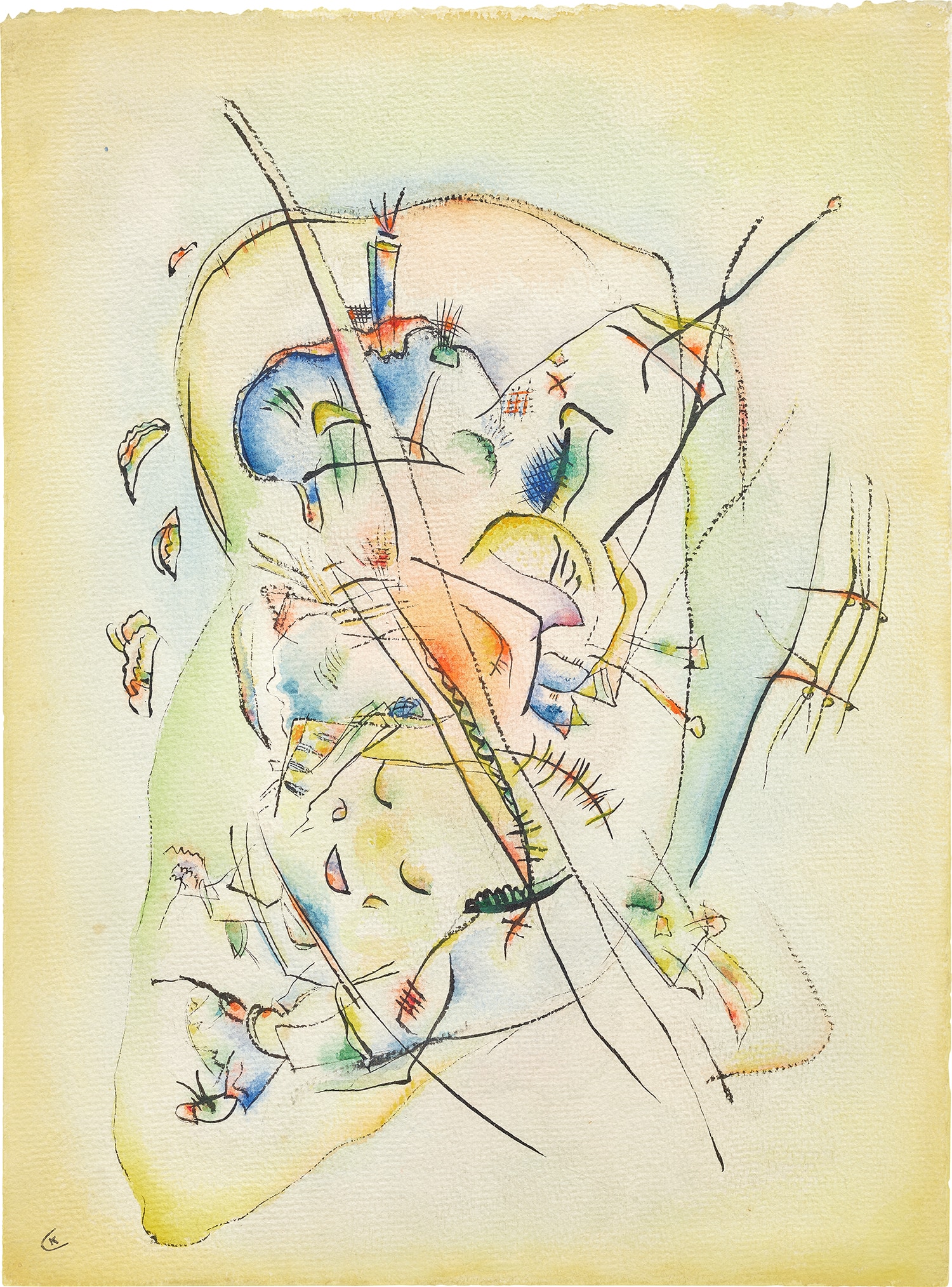



151
Wassily Kandinsky
Ohne Titel
signed with the artist’s monogram “K” lower left; signed and dated "Kandinsky 1918" on the reverse
watercolor, pen and India ink on paper
14 1/8 x 10 5/8 in. (35.9 x 27 cm)
Executed circa 1918.